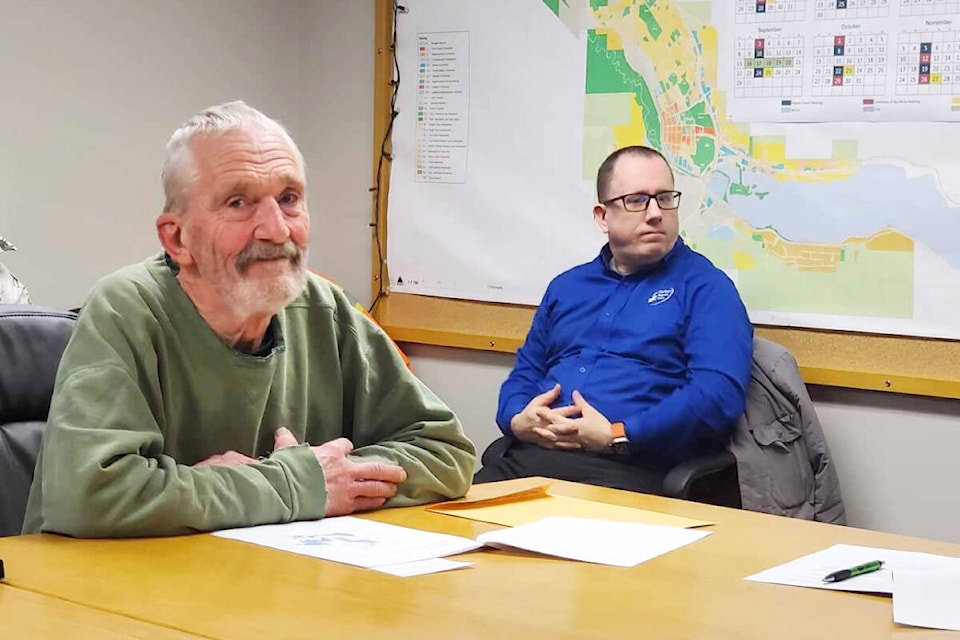A Williams Lake man’s push for changes in B.C. to permit alkaline hydrolysis as an alternative to cremation has the support of city council.
“I am hoping to put some pressure on by getting you people to refer a resolution to the North Central Local Government Association (NCLGA) who would hopefully promote it to the UBCM,” Stuart Westie, 76, told council during a committee of the whole meeting.
Alkaline hydrolysis or aquamation is legal in Saskatchewan, Ontario, Quebec, Newfoundland and Labrador and the Northwest Territories.
“The body is put into a machine,” Westie said. “They use normal city water, add a chemical like potassium chloride - turn heat up to 150 degrees and in five hours you are no more. The bones that are left can be crunched up and put it in an urn - also all of your fillings are still there - any hip replacements remain, etc.”
During the regular meeting Tuesday, Jan. 16, council voted in favour of submitting a resolution to the NCLGA convention encouraging the provincial government to make amends to the cemetery, internment and funeral services act to permit the alkaline hydrolysis process.
Council also voted in favour of submitting a joint resolution with the Cariboo Regional District as Westie is scheduled to make the same request at the CRD board meeting Friday, Feb. 8.
Westie said compared to flame-based cremation, which releases more than 500 pounds of carbon in the air, aquamation is a far better method.
Juliette O’Keeffe, an environmental health and knowledge translation scientist working in B.C. for the National Collaborating Centre for Environmental Health said aquamation has not been taken up widely yet where it is legal.
“It is a bit of an emerging technology and that may be the reason why there hasn’t been much of demand to date for it.”
She said the system uses the combination of a strong alkaline solution to dissolve the organic materials the human body is comprised of, pressure and heat within a vessel so there are no emissions to the air like there is with cremation.
Effluent from the system has a strong alkaline solution, which is a corrosive material, but that can vary depending on whether the aquamation system is a low temperature or high temperature one.
“They have slightly different operating parameters, but generally the heat, plus the strong alkali really destroys any pathogens of note, as long as it is operated as it is intended to.”
Additionally, the effluent may also be high in nutrients and organic content so for a downstream waste water treatment process, depending on the size of the process and the infrastructure, it may disrupt the functioning of the treatment system.
Effluent should be treated before it is disposed of to any waste water system.
To do that it is either neutralized to a point where it wouldn’t cause harm downstream or to infrastructure of processes or it’s diluted and released in small trickling amounts over time.
This is done so that compared to the volume of other water going into the system, it wouldn’t be a significant, O’Keeffe said.
Manufacturers provide advice on what type of neutralizers would be necessary to bring the pH down.
O’Keeffe said someone who has undergone some sort of radioactive implant procedure or has had cancer treatments with radioactive material, for example, would probably be excluded from going through aquamation because those materials do not get destroyed by the process.
“Similarly for someone who died with a prion disease, or Creutzfeldt-Jakob disease. Prions are hard to destroy so usually people who have died from a prion disease are subject to special treatment in terms of how they can be buried or cremated. There are different handling processes for people who have died of some diseases.”
There are health and safety risks to people operating the aquamation vessels due to the high corrosive solutions and high pressure system to consider as well.
If it is made legal in B.C., the legislation would have to include wording about protocols for handling a deceased person and storing that person on site in a respectful way, O’Keeffe said.
A spokesperson for B.C.’s ministry of public safety and solicitor general confirmed the ministry continues to review the issue, with no anticipated timeline at the present.
Laws governing the disposition of human remains are maintained by the ministry and administered by Consumer Protection BC so any change to authorize alternative forms of disposition for human remains has implications beyond the CIFSA, and would require engagement – both within the provincial government as well as with municipal and industry stakeholders.
READ MORE: Williams Lake man pushes for a more gentle return to earth burial
Don’t miss out on reading the latest local, provincial and national news offered at the Williams Lake Tribune. Sign up for our free newsletter here.
